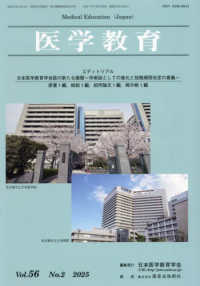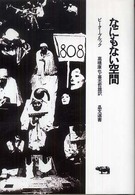- ホーム
- > 洋書
- > ドイツ書
- > Humanities, Arts & Music
- > Philosophy
- > eastern philosophy
Description
(Text)
Using archaeological, anthropological and philological methodologies, Zhang Zhung presents the formative elements in the development of civilization in Upper Tibet, the vast upland north and west of Lhasa. Part I of this major work provides a comprehensive examination of the monumental and aesthetic traces of the Metal Age and early historic period in Upper Tibet. Based on a field survey project of twelve years duration, the morphological, constructional, mythological and cross-cultural traits of the region's visible archaeological wealth are described in detail, laying the groundwork for the meticulous textual analysis that follows. In Part II of the book, annotated translations of numerous excerpts from Bon and Buddhist texts present the traditional view of Tibet's ancient past. These indigenous literary accounts of the early cultural, religious and political complex of the Plateau are in turn systematically compared to the archaeological record, revealing critical points of agreement. Zhang Zhung has pioneered the application of empirical evidence to gauge the historicity and significance of Tibetan Bon sources. Part III is devoted to the study of the archaic funerary heritage of Tibet, which proves to be highly useful with regard to analyzing the cultural evolution of the Plateau. New perspectives on the identity and contributions of the Tibetan ethnos are obtained by subjecting Dunhuang and Bon textual materials to rigorous archaeological and ethnographic interpretation. Considerable effort has been devoted to analyzing Tibetan funerary literature and to discerning its links to northern Inner Asian mythology and burial practices of the first millennium BCE and the first three-quarters of the first millennium CE. Critically edited transliterations of the Tibetan works, tables of all the surveyed archaeological sites, bibliographies and extensive indexes complement the main text.








